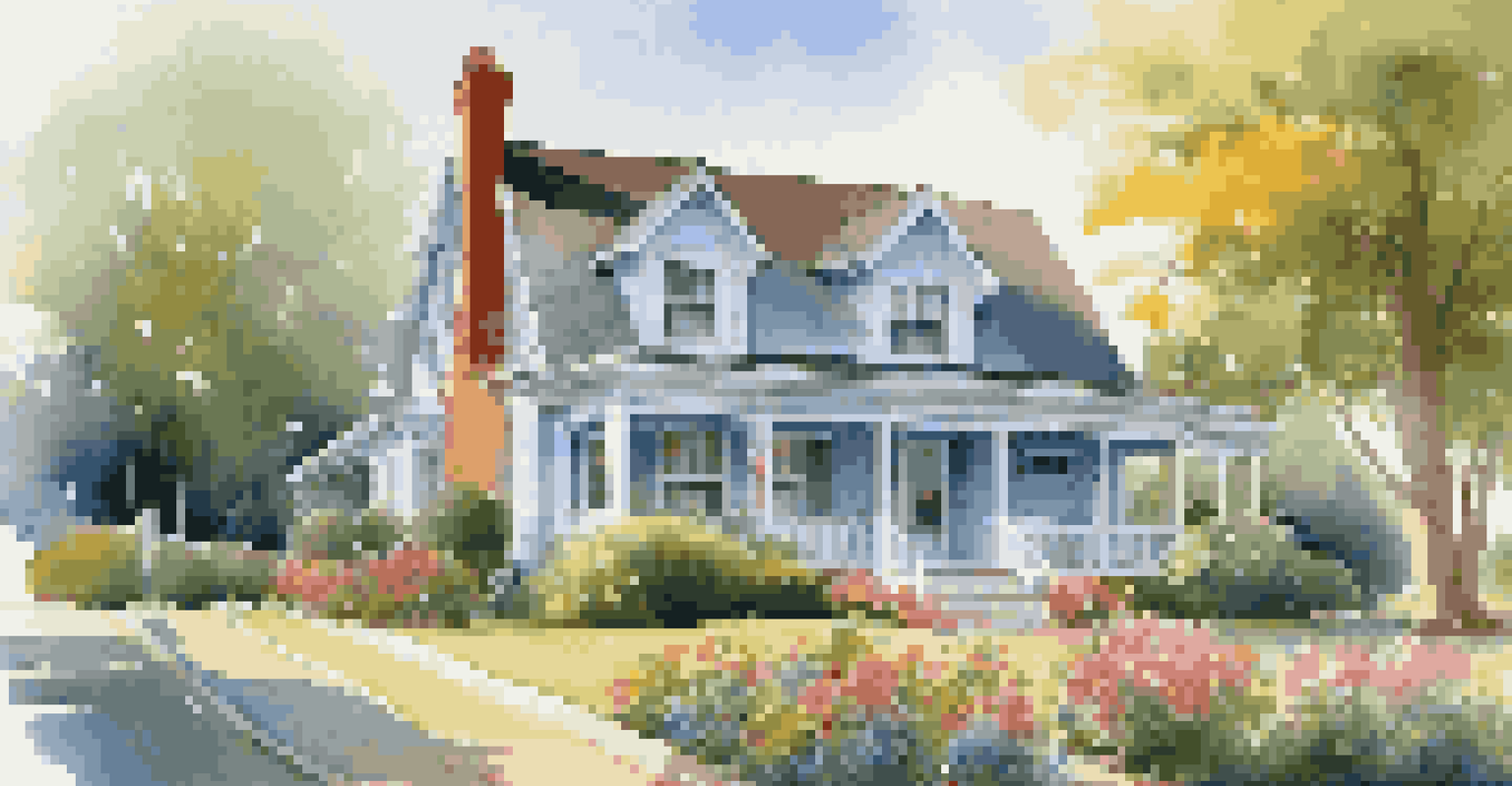How Virtual Tours Are Reshaping Traditional Real Estate Marketing

Understanding Virtual Tours in Real Estate Marketing
Virtual tours are immersive experiences that allow potential buyers to explore properties from the comfort of their homes. Using 360-degree photography and video technology, these tours provide a realistic view of the property layout and features. This innovation is quickly becoming a staple in real estate marketing, attracting tech-savvy clients who prefer convenience.
The best way to predict the future is to create it.
Imagine being able to walk through a home without stepping foot outside. That's the power of virtual tours! They give buyers the freedom to visit multiple properties in a single day, all without the hassle of scheduling showings. This flexibility not only saves time but also enhances the buying experience by making it more interactive.
Furthermore, virtual tours can showcase a property at its best, highlighting unique features that might be overlooked during a traditional showing. For example, a beautifully staged living room can be captured in stunning detail, helping potential buyers envision themselves living there.
The Benefits of Virtual Tours for Sellers
For sellers, virtual tours offer a competitive edge in a crowded market. Homes that include virtual tours tend to attract more interest and can lead to faster sales. This is particularly important in today’s fast-paced real estate environment, where buyers are looking for convenience and quick access to information.

Moreover, virtual tours can reduce the number of physical showings necessary. By allowing interested parties to experience the property online first, sellers can filter out less serious buyers. This not only saves time but also keeps the home in pristine condition for genuine prospects.
Virtual Tours Enhance Buyer Experience
Virtual tours allow buyers to explore properties from home, providing a flexible and immersive viewing experience.
Additionally, properties with virtual tours often command higher prices. Buyers are often willing to pay a premium for the convenience and enhanced viewing experience that these tours provide. In essence, virtual tours can significantly boost the perceived value of a property.
Enhancing Buyer Engagement through Interactivity
One of the standout features of virtual tours is their interactive nature. Buyers can navigate through rooms, zoom in on details, and even access additional information about specific features. This level of engagement keeps potential buyers interested and encourages them to spend more time exploring a property.
Innovation distinguishes between a leader and a follower.
Think of it as a virtual open house that never ends! Unlike traditional marketing methods, where buyers might quickly flip through photos, virtual tours allow for a deeper connection with the space. By allowing users to control their viewing experience, agents can create a more personalized interaction.
Furthermore, integrating virtual tours with social media platforms enhances sharing opportunities. Buyers can easily send links to friends or family, making the decision-making process more collaborative and informed.
Virtual Tours and the Power of Storytelling
Storytelling is a vital component of effective marketing, and virtual tours provide a unique platform to weave a narrative around a property. By showcasing the layout and flow of a home, agents can highlight how spaces function together, creating a sense of lifestyle that resonates with buyers.
For instance, a virtual tour can guide potential buyers through a day in the life at a property, from morning coffee in the kitchen to cozy evenings in the living room. This approach helps buyers visualize their future in the space, making it more enticing.
Sellers Benefit from Increased Interest
Properties with virtual tours attract more buyers and can lead to faster sales, giving sellers a competitive edge.
Moreover, storytelling through virtual tours can help convey the history of a property or its neighborhood. By including local attractions or community features within the tour, agents can foster a deeper connection between the buyer and the location.
Cost-Effectiveness of Virtual Tours for Real Estate Agents
Implementing virtual tours can be a cost-effective strategy for real estate agents. While there may be initial setup costs, the long-term benefits often outweigh them. By generating more leads and closing sales faster, agents can see a significant return on investment.
Additionally, virtual tours can serve multiple purposes. They can be used in listings, social media promotions, and even email marketing campaigns. This versatility allows agents to maximize their reach without continually investing in new photography or marketing materials.
In a world where traditional marketing methods can be pricey, virtual tours offer an economical solution that can elevate an agent's marketing strategy. By embracing technology, agents can work smarter, not harder.
The Role of Virtual Tours in a Digital-First World
As our society becomes increasingly digital, the real estate industry is adapting to meet consumers where they are. Virtual tours align perfectly with this shift, catering to the growing preference for online experiences. With more people conducting property searches online, having a robust digital presence is crucial.
Consider how many buyers start their home search on the internet. Virtual tours allow them to explore properties at their own pace, leading to more informed decisions. This shift not only benefits buyers but also empowers agents to showcase their listings more effectively.
Future of Real Estate Marketing
As technology evolves, virtual tours will become even more integral, enhancing the home buying process in a digital-first world.
Moreover, integrating virtual tours into real estate websites can enhance SEO efforts. By incorporating relevant keywords and optimizing the user experience, agents can improve their visibility and attract more traffic to their listings.
Challenges and Limitations of Virtual Tours
Despite their many advantages, virtual tours are not without challenges. One significant concern is the technology barrier; not all buyers have access to high-speed internet or the latest devices. This limitation can exclude some potential buyers from the immersive experience that virtual tours offer.
Additionally, while virtual tours can provide a comprehensive view of a property, they can’t fully replicate the tactile experience of a physical showing. Buyers often want to feel the space, check for any odors, and get a real sense of the neighborhood. Hence, it’s essential for agents to strike a balance between virtual and in-person showings.

Lastly, creating high-quality virtual tours requires investment in technology and skills. Agents must either learn to create these tours themselves or hire professionals, which can be daunting for those who are not tech-savvy.
The Future of Real Estate Marketing with Virtual Tours
Looking ahead, virtual tours are poised to become even more integral to real estate marketing. As technology advances, we can expect even more immersive experiences, such as virtual reality (VR) and augmented reality (AR) integrations. This will allow buyers to not only view properties but also interact with them in new and exciting ways.
Moreover, as remote work continues to shape our lifestyles, the demand for virtual tours will likely grow. Buyers relocating from far away will increasingly rely on virtual tours to make informed decisions without visiting in person. This trend could change how agents approach property marketing altogether.
In conclusion, the evolution of virtual tours is a game-changer for the real estate industry. By embracing this technology, agents can enhance their marketing strategies, connect with buyers more effectively, and ultimately reshape the future of home buying.